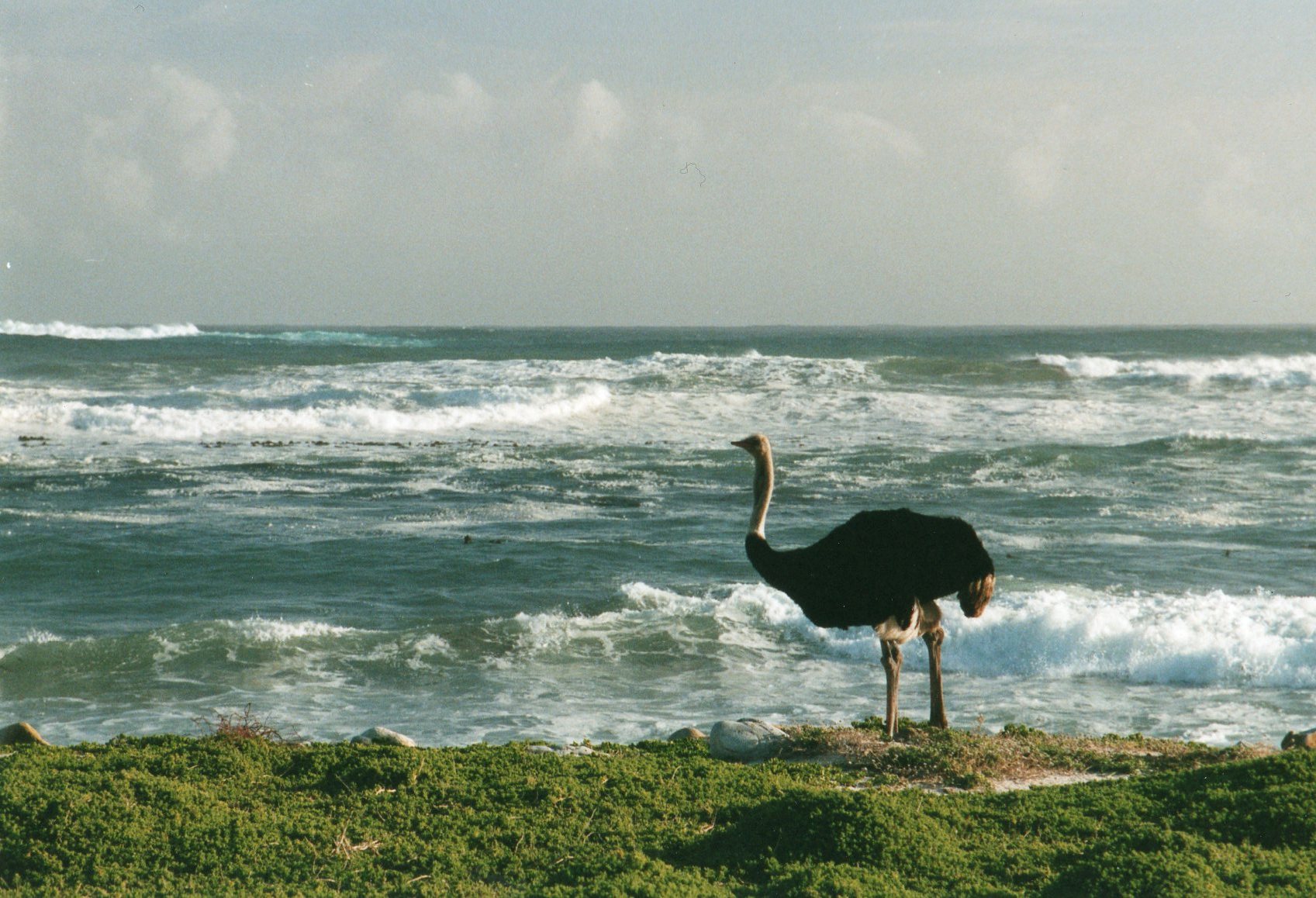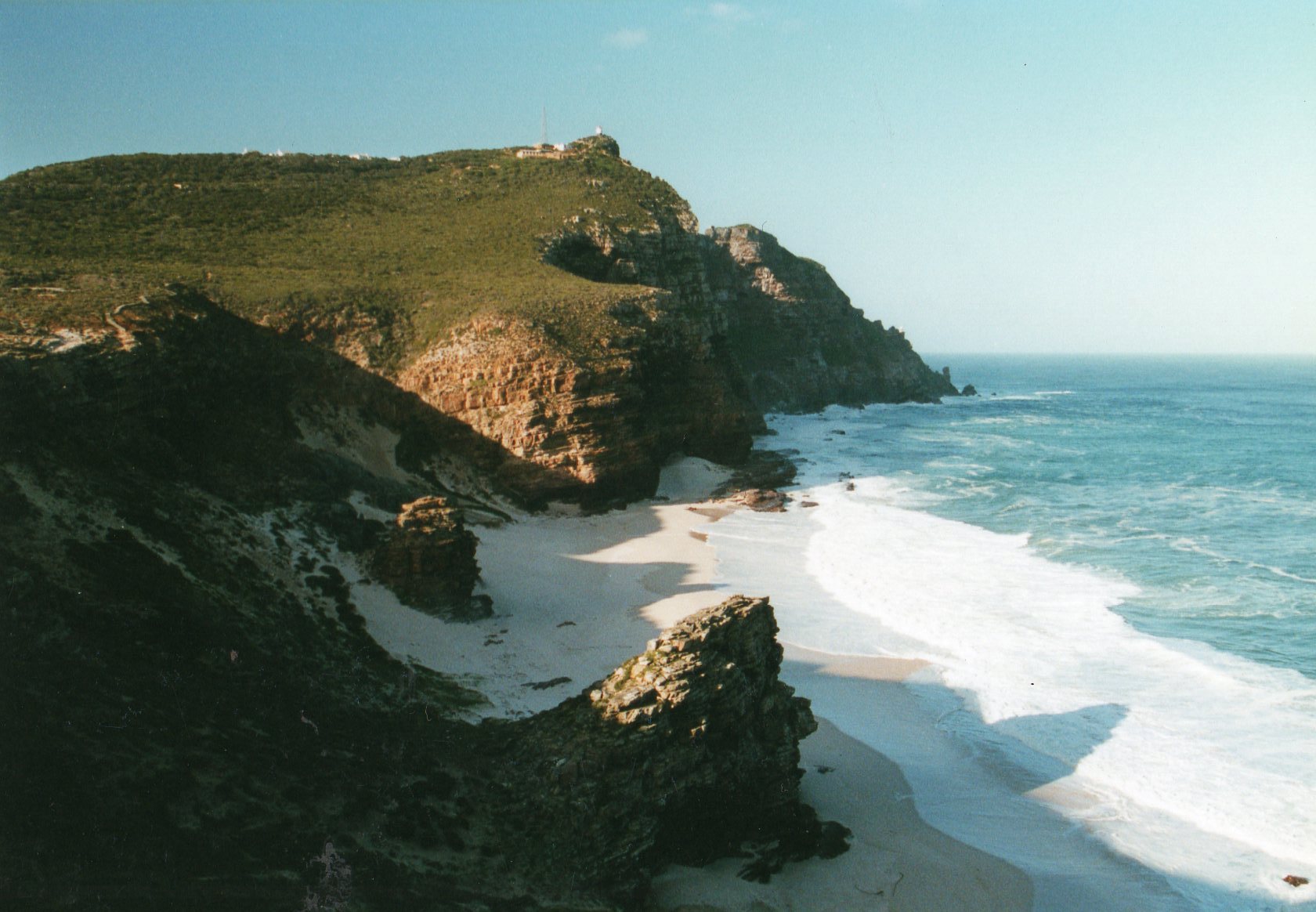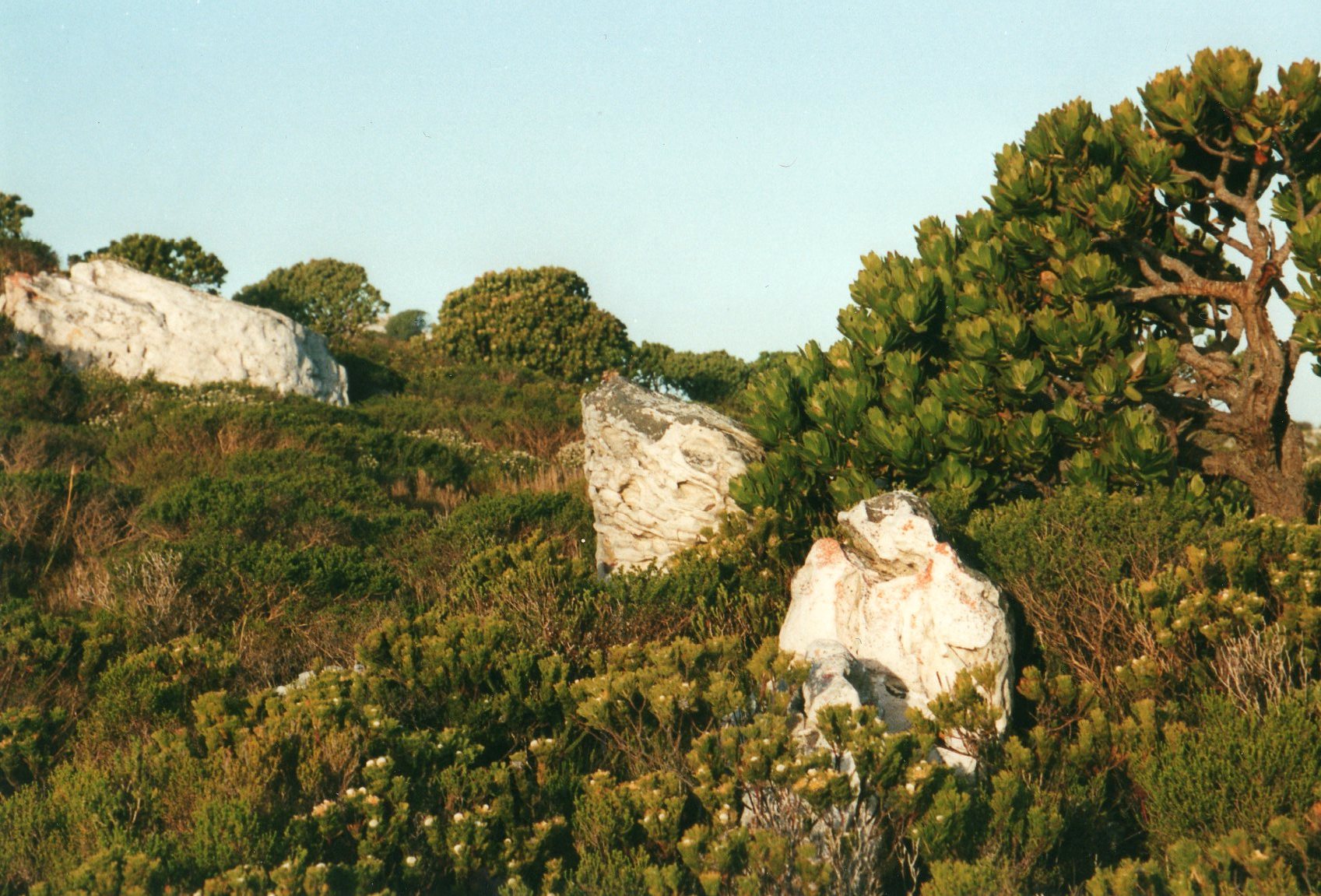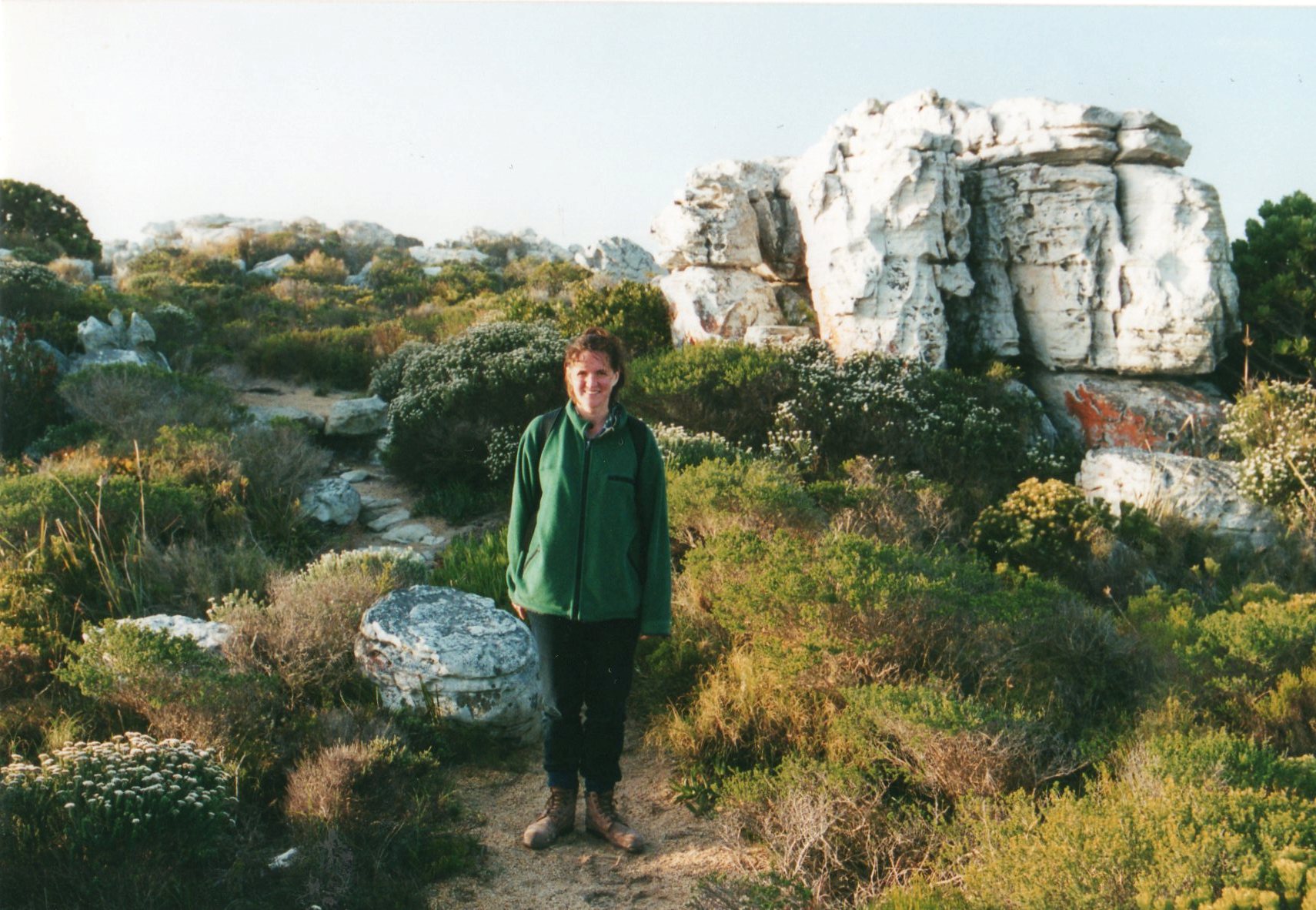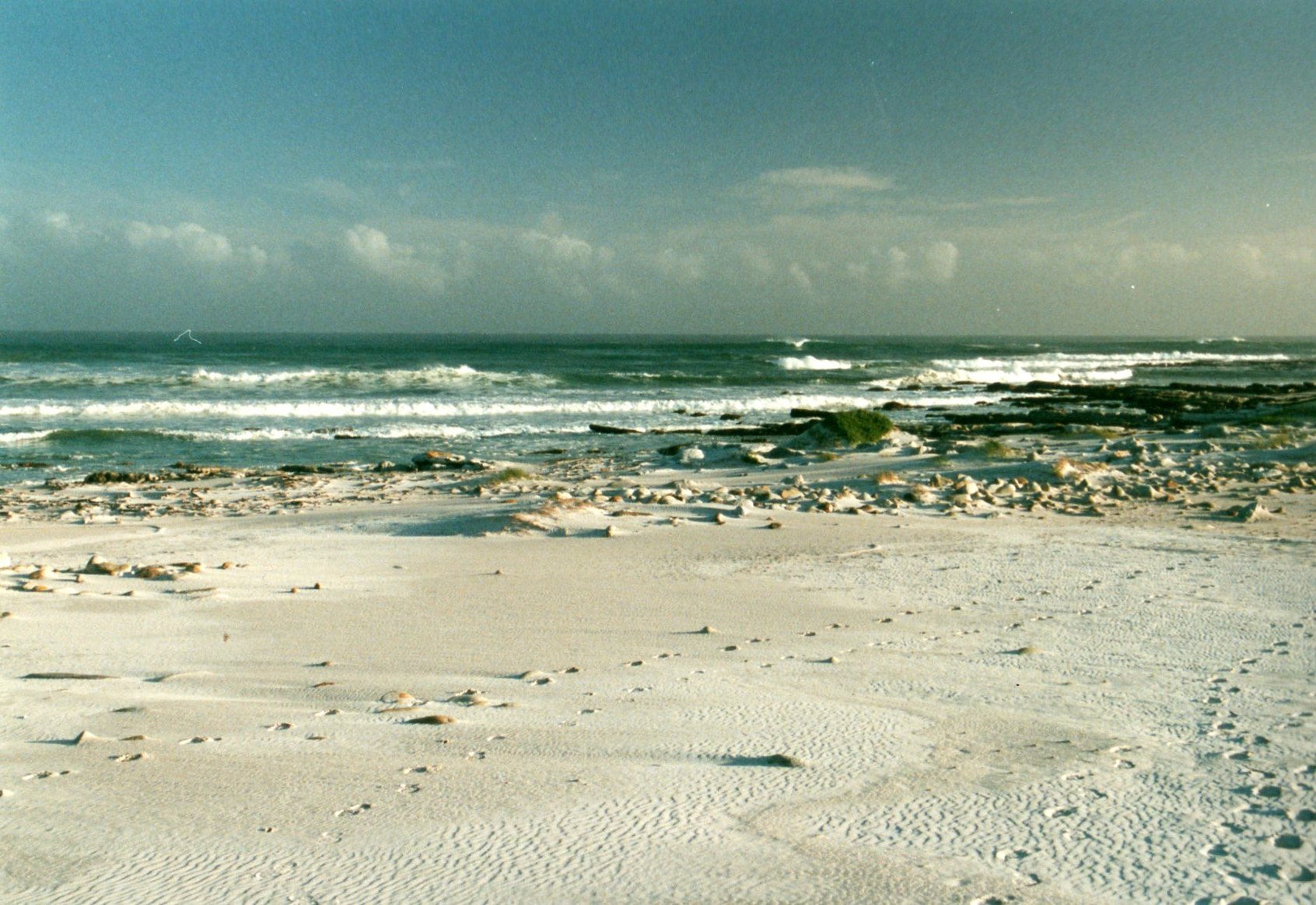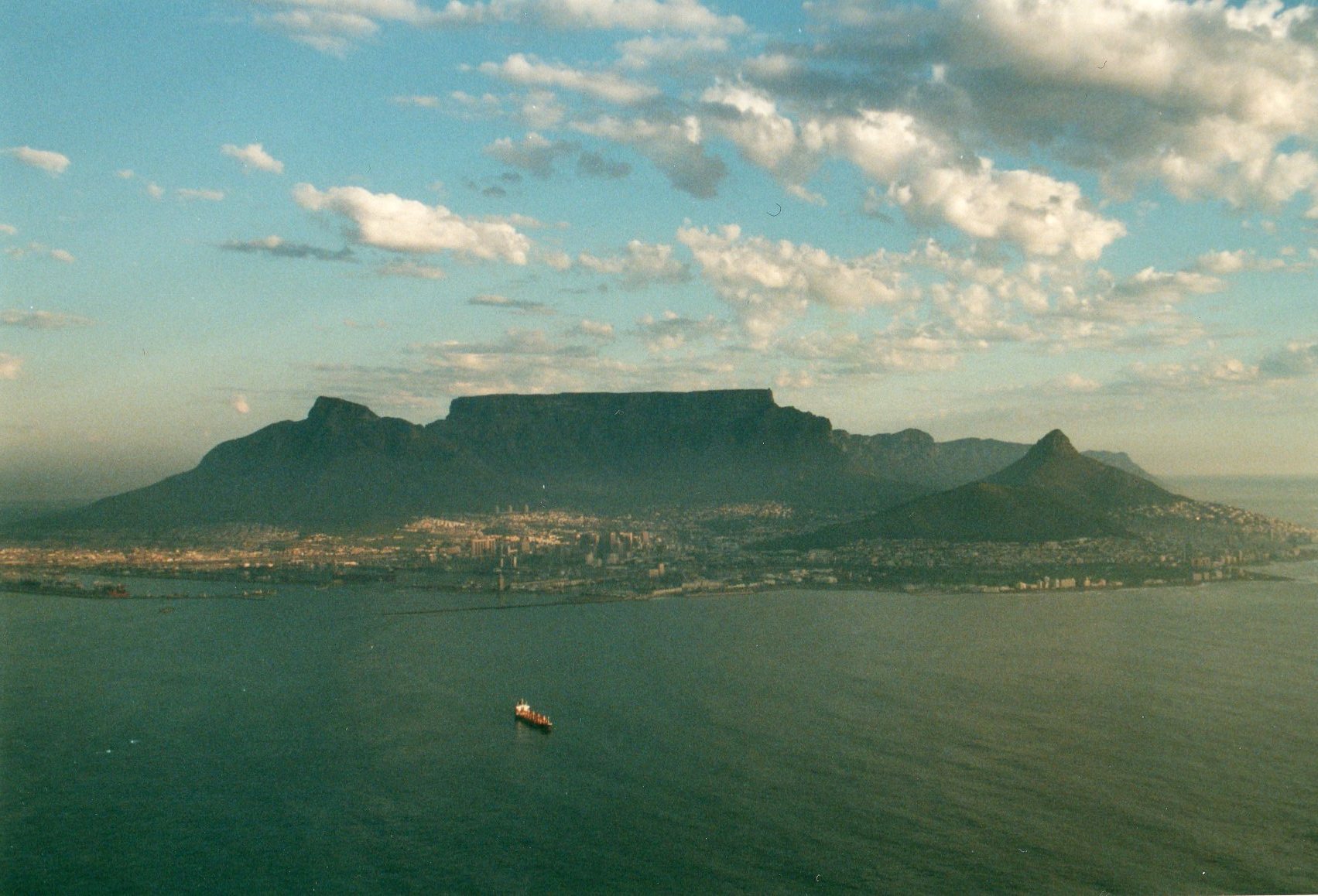Cape of Good Hope
Key information: Cape of Good Hope 
- The magic of this place is its combination of Ocean beauty, fabulous fynbos vegetation and historical resonance.
- There is a variety of trails, but the best takes you along the booming cliffs and beaches of the Atlantic coast, then turn inland, through changing bands of vivid and varied fynbos.
- The Cape of Good Hope has had resonance for travellers for centuries, "rounding the Cape" a key and risky landmark on the routes to India, Australia and the Far East.
- Cape Point is always crowded and has an unpleasant baboon population. Despite that, this is not a walk to miss.
Walkopedia rating
- Walkopedia rating81
- Beauty31
- Natural interest15
- Human interest7
- Charisma31
- Negative points3
- Total rating81
Vital Statistics
- Length: Variable
- Maximum Altitude: N/A
- Level of Difficulty: Variable
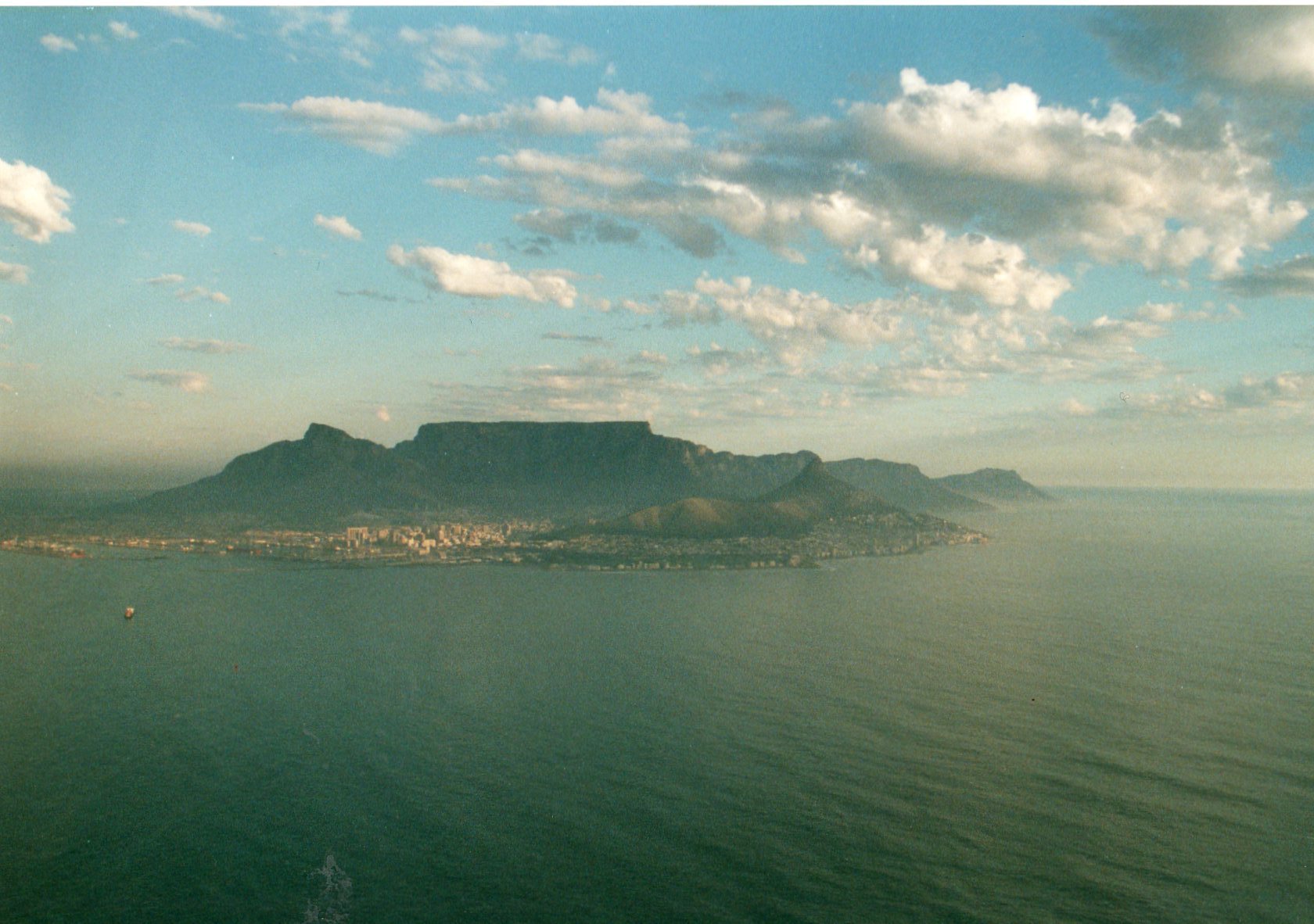
WALK SUMMARY
The Cape of Good Hope has had resonance for travellers for centuries, "rounding the Cape" originally and aptly named the Cape of Storms - a key and risky landmark on the routes to India, Australia and the Far East. Diaz was the first to accomplish this in 1488, and died in a wreck here in 1500. Vasco da Gama rounded the cape in 1497. The treacherous coast is littered with wrecks and the Flying Dutchman is most frequently seen off Cape Point.
The Cape is often thought to be the southernmost point of Africa, but in fact this prize goes to a stretch of beautiful but landmark free coast some 150 km to the east. The Cape is, in contrast, unforgettable, the wild terminus of the 75 km Cape Peninsula which narrows from Cape Town and the extraordinary Table Mountain to the beautiful national park at its southern end.
The Cape area is home to the Cape Floral Kingdom, one of the world's six major botanical zones, and its richest one, harbouring an extraordinary diversity of plants in a relatively tiny area. On the Cape peninsula alone, there are said to be over 2,800 species of plant, more than in the whole of the UK. Known as fynbos, this vegetation includes proteas, ericas (heathers) and reeds and is startlingly beautiful and vivid on a bright day.
There are numerous trails in the area, but the best route runs from Cape Point in the south along the western shore, then turns inland and threads through the fynbos vegetation to the park entrance in the far north, a long four hour's trek.
At Cape Point, the spectacular rocky spine where the Cape peninsula peters out into turbulent waters, the cliffs fall sheer into the surf. The views here are superb and the lucky may see a school of dolphins or a southern right whale far below.
A path drops down past the unpleasant, swollen-arsed Baboons which prowl around the carpark at the base of Cape Point, then winds through gorgeous fynbos, around the cliffs above the perfect Diaz Beach, immaculate white sand, to the real Cape; just as The Cape is not the southernmost place in Africa, so Cape Point is not, despite looking the part, actually the Cape of Good Hope, which is a comparatively modest pile of boulders a mile or so to the south-west.
The path follows a magnificent curve of shingly beach for perhaps 3km before climbing onto the plateau and entering a different world. The fynbos is superbly vivid and varied here, a really wonderful experience to wander through. The path turns north along a good track through the bush, which gradually shrinks to lower, drier scrub. After a few flattish, beautiful but relatively uneventful miles, the track winds over a small rocky ridge and snakes down to the park entrance.
There are antelope, a few bountebok and cape mountain zebras here, as well as Cape clawless otters.
WILLIAM MACKESY'S ACCOUNT
of this walk
The Cape of Good Hope has had resonance for travellers for centuries, "rounding the Cape" – originally and aptly named the Cape of Storms - a key and risky landmark on the routes to India, Australia and the Far East. Diaz was the first to accomplish this in 1488, and died in a wreck here in 1500. Vasco da Gama rounded the cape in 1497. The treacherous coast is littered with wrecks, including the troopship The Birkenhead, which sank off the aptly named Danger Point in 1852 with 600 soldiers still on board, following the first recorded instruction for "women and children.....
READ MOREOther accounts: share your experiences
Your comments on this walk, your experiences and suggestions, and your photos are very welcome. Where appropriate, you will be credited for your contribution.
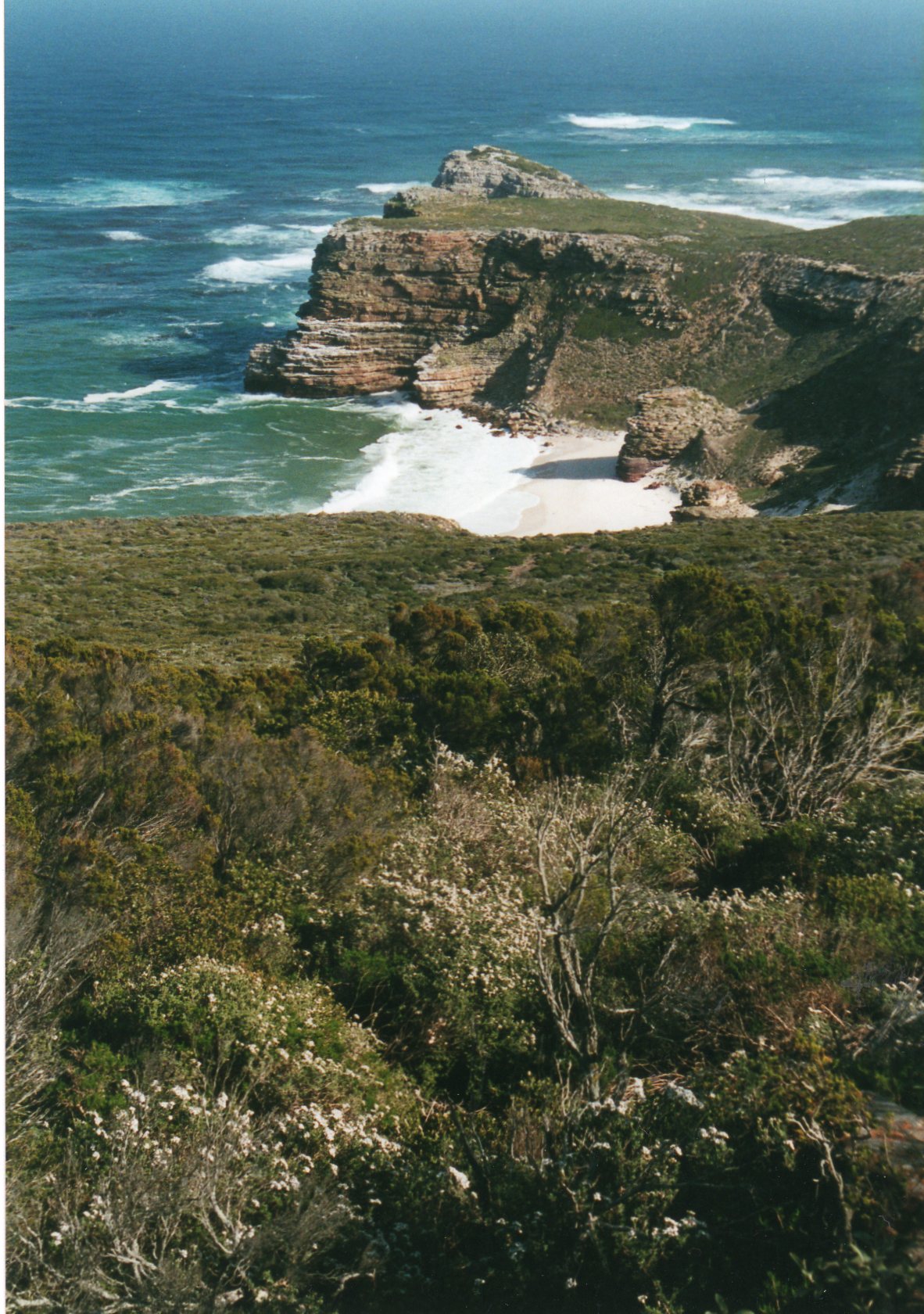
We have a lot of helpful practical information and tips about this walk, covering everything from the best books and maps, to timing and weather, geting there, possible problems, whether you need a guide and where to find them, and useful websites. This section is only open to members.
Membership is FREE AND JOINING TAKES 30 SECONDS. To login or sign up click here
Safety and problems: All walks have inherent risks and potential problems, and many of the walks featured on this website involve significant risks, dangers and problems. Problems of any sort can arise on any walk. This website does not purport to identify any (or all) actual or potential risks, dangers and problems that may relate to any particular walk.
Any person who is considering undertaking this walk should do careful research and make their own assessment of the risks, dangers and possible problems involved. They should also go to “Important information” for further important information.
Anyone planning an expedition to this place should see further important information about this walk.
Safety and problems: All walks have inherent risks and potential problems, and many of the walks featured on this website involve significant risks, dangers and problems. Problems of any sort can arise on any walk. This website does not purport to identify any (or all) actual or potential risks, dangers and problems that may relate to any particular walk.
Any person who is considering undertaking this walk should do careful research and make their own assessment of the risks, dangers and possible problems involved. They should also go to “Important information” for further important information.
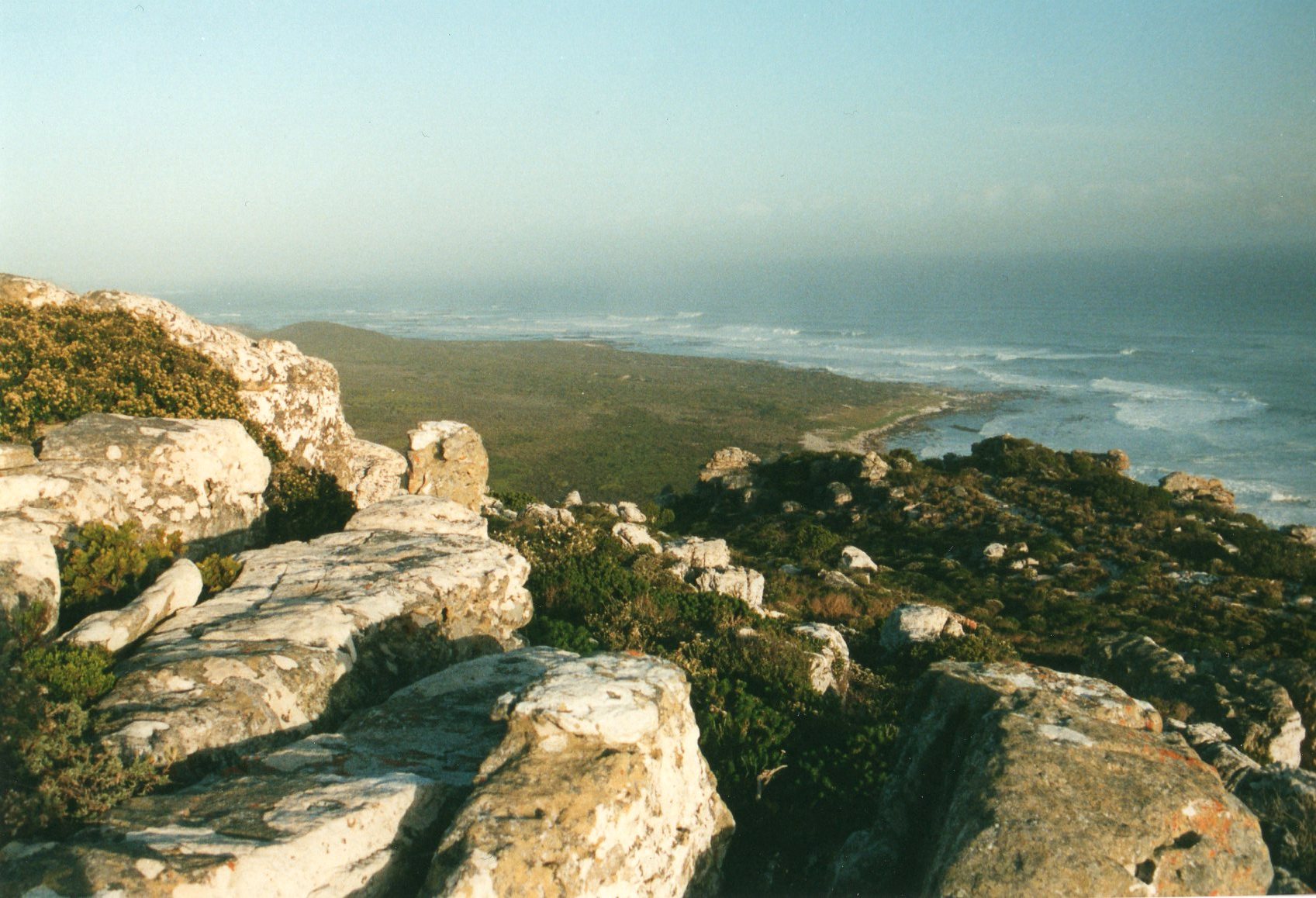
OTHER ACCOUNTS
share your experiences
Add your experiences, suggestions and photos. We would be delighted to receive your writing and ideas (which will be attributed appropriately where published).
Anyone planning an expedition to this place should see further important information about this walk.
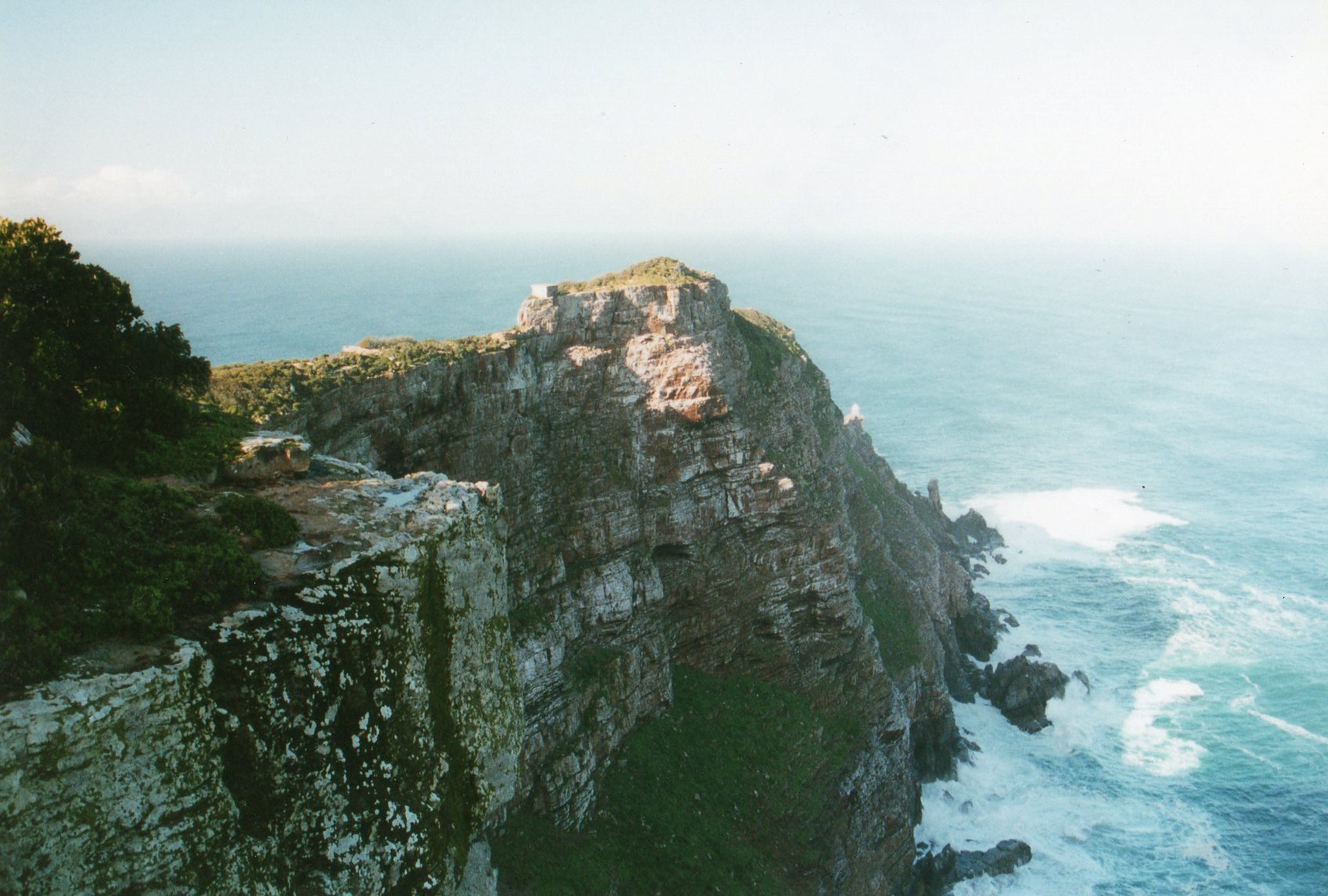
Responsible travel matters, a lot. How you travel will make a real difference - for better or worse. PLEASE consider this when making plans. Read more



